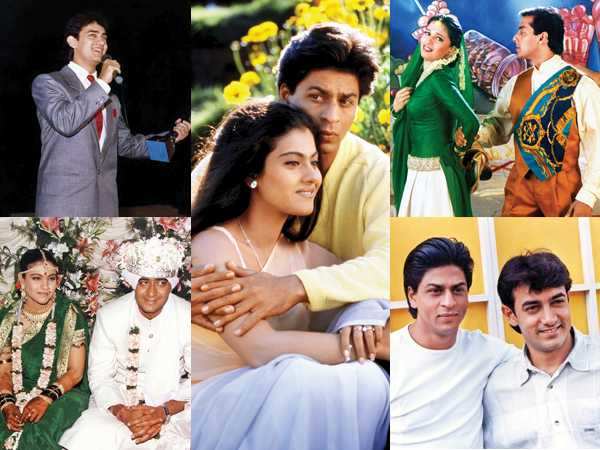
Loud, exaggerated and endless fun. The ’90s were a unique brandish of cinema. They played up to the gallery but at the same time, they charted new territory. Films like Dilwale Dulhania Le Jayenge, Rangeela, Hum Aapke Hain Koun..! and many more changed showbiz forever. The new triumvirate of Khans arrived and has continued to dominate proceedings to date. But the decade was so much more than just about Aamir, Salman and Shah Rukh. It was a time when film music created new highs, an age where every star for reasons good or bad, etched a permanent place in history. It was truly the age of the rockstars.

Dimple Kapadia’s tryst with art cinema
She had come to terms with her separation with Rajesh Khanna. The media had stopped prying about her alleged closeness to Sunny Deol. Dimple Kapadia was now free to concentrate on her career. She worked in acclaimed titles like Govinda Nihalani’s Drishti, Gulzar’s Lekin and the most revered and awarded Kalpana Lajmi’s Rudaali. If Rudaali fetched her National Award, she also impressed with her performance in Krantiveer. She took home her fourth Filmfare Award for the film. And that was as good an end to Dimple’s career as a leading lady in Hindi films. It was the right time to focus on daughter Twinkle Khanna’s career.
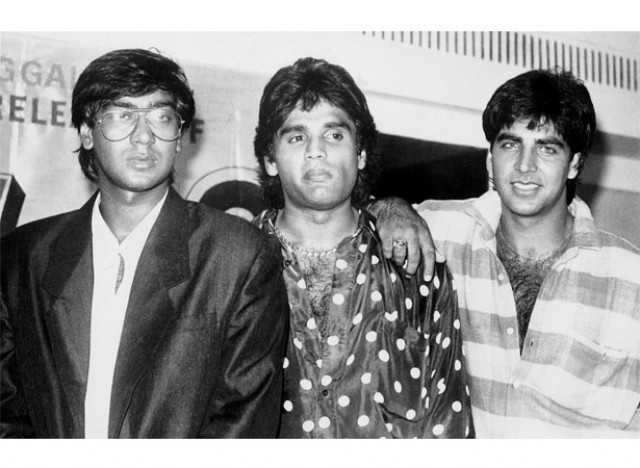
Turn to action
Action movies had ruled the roost through the ’80s. But with a new decade it was time to reinvent the wheel. Young guns like Ajay Devgn and Akshay Kumar arrived onto the scene with their high flying kicks and martial arts training. Ajay’s big debut Phool Aur Kaante set the precedent. Akshay Kumar took some time to sink his teeth into A-list territory. After a spate of flops, he hit gold with the Khiladi movies. So much so it became his official epithet. Movies like Main Khiladi Tu Anari, Mohra and Khiladiyon Ka Khiladi did the trick. It was during this time that names like Suneil Shetty and Sunny Deol also cashed in on the action frenzy.

Naseeruddin Shah takes to commercial cinema
The ’90s showcased Naseeruddin Shah in an avatar never witnessed before. He seemed to profess a sense of detachment and disillusionment with parallel cinema. He focussed all his energies into masala entertainers. He’d already had memorable movies like Tridev and Hero Hiralal in the ’80s. But actioners/comedies like Vishwatma, Chamatkar, Sir, Mohra and Najayaz were a totally new realm. He did receive flak for doing such mindless entertainers but he continued with full conviction. He veered to supporting roles in big ticket movies like Chaahat, China Gate and Sarfarosh.

Sanjay Dutt’s travails with the Law
It was an unfortunate incident that Sanjay is still repaying for till date. In April 1993, following a series of blasts post the riots in Mumbai, Sanjay Dutt was picked up by the Mumbai police from the airport as he was returning from Mauritius. The charge was illegal possession of arms like the AK-47 rifle and hand grenades. Sanjay was tried under the TADA law and sentenced to imprisonment for his alleged involvement in the blasts and his alleged proximity with the underworld.

The infamous black buck poaching case
During the shooting for Rajshri Productions’ Hum Saath Saath Hain in 1998, Salman Khan, Saif Ali Khan, Tabu, Sonali Bendre and Neelam decided to go out on a game of hunting. Allegedly, they managed to hunt and kill a black buck and chinkara, unaware they were indulging in an illegal practice. As a result, the Rajasthan judiciary issued warrants against all actors. That turned out to be one of the biggest controversies of the ’90s. To date, the actors involved are attending trials at courts.
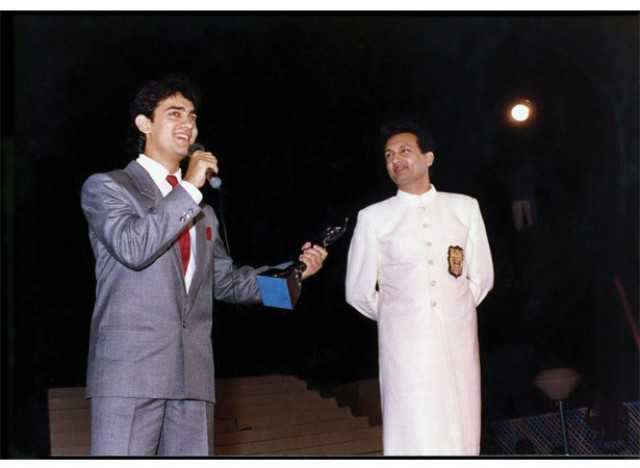
Aamir Khan’s boycott of film awards
At some point after the release of Jo Jeeta Wohi Sikandar, Aamir Khan became disillusioned with the very concept of awards in India. He restrained from speaking to the press and avoided awards ceremonies. Aamir believed that the media didn’t have enough accountability. He began to believe that awards were biased. As a result, he refused to accept awards until his home production Lagaan managed an Oscar nomination in 2001.
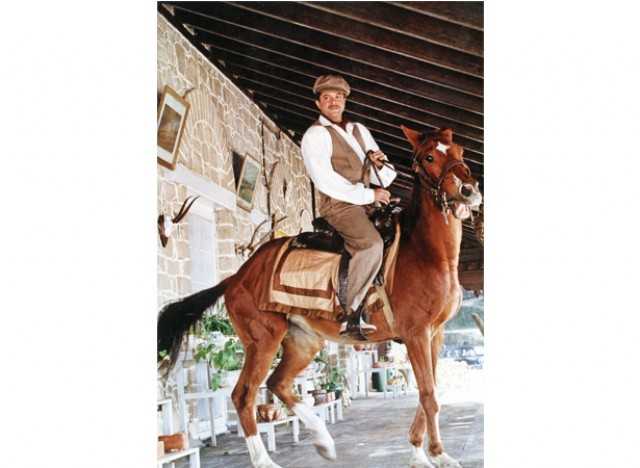
Anil Kapoor’s strong run
He had aced the industry test with successes like Woh Saat Din, Janbaaz, Karma, Mr. India, Tezaab and Ram Lakhan in the ’80s. At the turn of the ’90s, Anil Kapoor was the big booming hero. Some believed he’d take over the reins from Amitabh Bachchan – given his act in the Javed Akhtar written Meri Jung. In the ’90s he was also pitted against competition like Sunny Deol, Sanjay Dutt and Jackie Shroff. But Anil held his own with films like Lamhe, Beta, Laadla and 1942: A Love Story. He won a Filmfare Award for Best Actor for his efforts in Beta. At the end of the decade, Anil mustered a great run with films like Judaai, Virasat, Biwi No. 1, Taal and Pukar in 2000.
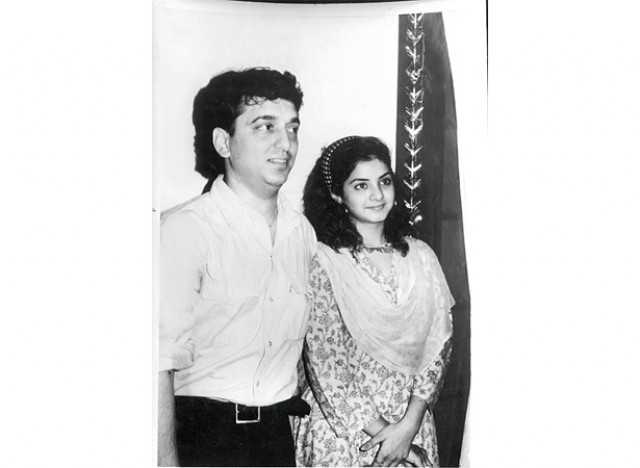
Life and death of Divya Bharti
She was in the film industry for barely two years but the blitzkrieg she created was unbelievable. It started with Vishwatma in 1992 and ended with Kshatriya in 1993. In between, Divya worked in a whopping 12 films most of which were hits. Shola Aur Shabnam, Deewana, Balwaan and Dil Aashna Hai were the most notable of her releases. Divya tragically fell from the window of her fifth storey apartment. Her end was just as dramatic as her rise.
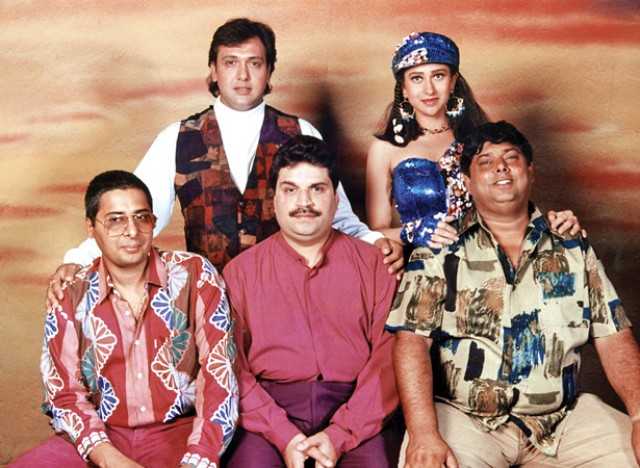
The Govinda and David Dhawan success story
Govinda had been around for a long time and achieved moderate success supporting established names like Rajesh Khanna in Swarg and Amitabh Bachchan in Hum. But his fate took a turn for the best when he began collaborating with David Dhawan. Their first film together was Shola Aur Shabnam. They hit the popularity wave with movies like 0ankhen, Raja Babu, Coolie No. 1, Sajan Chale Sasural and Hero No. 1. There on Govinda continued his success streak well into the 2000s. His films had audiences dancing in the aisles.

Sridevi’s shine and fade out
She was a true-blue phenomenon in the ’90s. Movies were made for Sridevi and she was paid money at par with male stars. Chandni and Chalbaaz had ended the ‘80s with great gusto for Sridevi. And she continued the run with acclaimed movies like Lamhe and Gumraah. As well as hits like Ladlaa, Heer Ranjha, Farishtay and Judaai. The rivalry moved from Jaya Prada to Madhuri Dixit and Urmila Matondkar. But Sridevi maintained her elegance throughout. Post the success of Judaai in 1997, Sridevi’s career phased out as she concentrated on her marriage with Boney Kapoor and kids Jhanvi and Khushi.
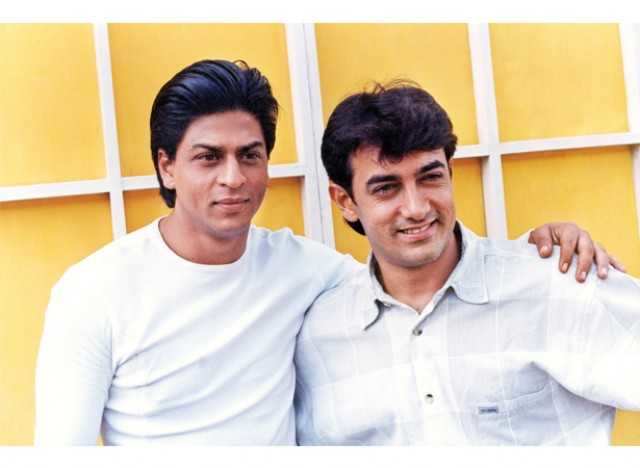
Aamir’s refusals gave Shah Rukh’s career a boost
It’s a well-known secret that Aaamir Khan’s proclivity for rejecting scripts allowed Shah Rukh Khan to play a blockbuster innings. Reportedly, Aamir rejected films like Darr, Deewana, Josh and even the epic Dilwale Dulhania Le Jayenge. Reportedly, even Salman Khan had let go of Baazigar. In an age when action movies and multi-starrers were popular, SRK added a twist to romance and cashed in on the lover-boy image. It was a masterstroke, one that made the career of King Khan.
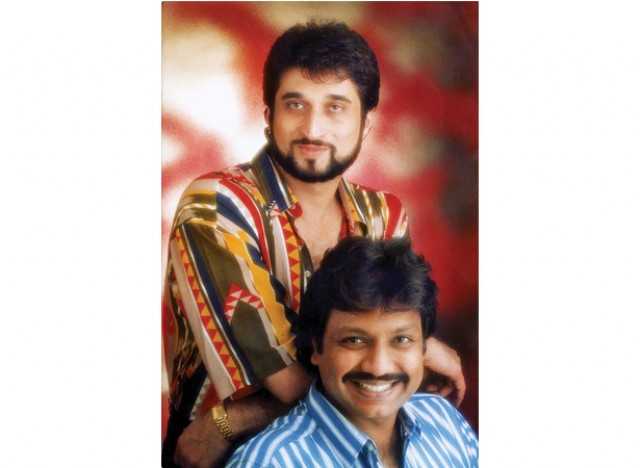
Nadeem-Shravan’s blaze to fame
Nadeem-Shravan emerged as the most successful music composers of the ’90s, belting hits after hits like Aashiqui, Saajan, Deewana, Hum Hain Rahi Pyar Ke , Dilwale, Raja, Barsaat, Agni Sakshi, Jeet and Raja Hindustani (between 1991-1996). It’s said T Series stopped counting the cassettes sales for Aashiqui after it crossed a crore. The duo also was the first to appear on the film posters, such was their music making prowess at the box-office Ironically, their fall too was tied to the music company, which mentored them. In 1997, Nadeem was accused of masterminding the assassination of T-Series head honcho Gulshan Kumar. Fearing of arrest, Nadeem who was in London then, never returned to India. Through time cracks appeared in his relationship with partner Shravan. They finally parted ways after Dosti (2005).
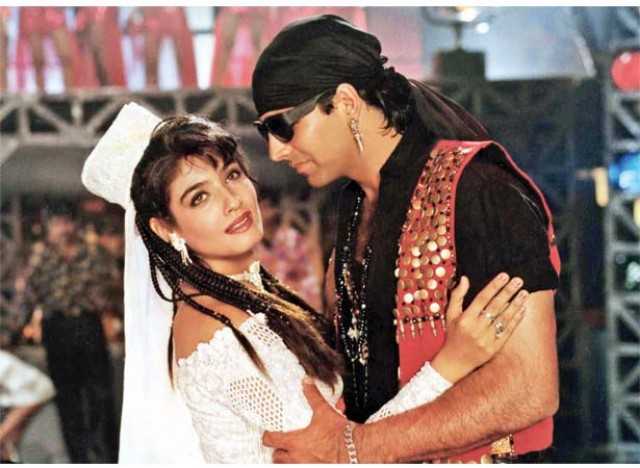
Akshay Kumar’s serial dating
Akshay Kumar was enjoying attention from two quarters. One was from the long queue of producers wanting to sign the khiladi. And the other was a long list of women wanting to date the most eligible bachelor in town. The most remembered of his affairs was with Raveena Tandon, whom he was reportedly engaged to. And then there were alleged link ups with Ashwini Bhave, Pooja Batra, Ayesha Jhulka and even Rekha. But it was the pandemonium of the Akshay-Raveena-Shilpa Shetty triangle that created the biggest stir. His relationship with Shilpa too didn’t end well. Until he met Twinkle Khanna in 1998, Akshay enjoyed the reputation of being a Casanova.
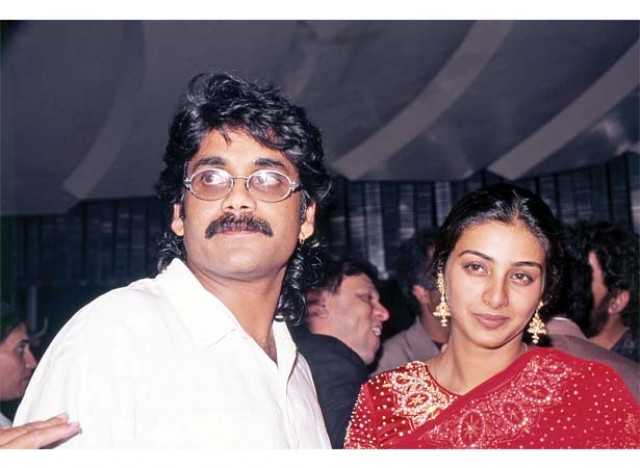
A sensation called Tabu
Niece of Shabana Azmi and younger sister of the established star Farha, Tabu was slated to be a promising actor. But her very first film Prem ran into production troubles and Tabu made her first impression with Pehla Pehla Pyar and later Vijaypath. Almost instantly the grapevine started linking her with men. First it was Aditya Pancholi and then it was Sajid Nadiadwala. Tabu even got engaged to Sajid but the romance fell through. Next were rumours linking her to South superstar Nagarjuna. Turning a deaf ear to that, Tabu concentrated on super performances in Maachis, Virasat and Hu Tu Tu instead.
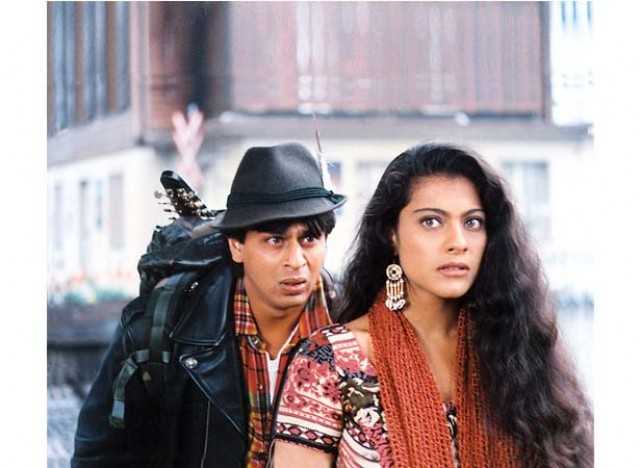
Phenomena of Dilwale Dulhania Le Jayenge
Dilwale Dulhania Le Jayenge continues to be screened at Maratha Mandir 20 years after its release. That’s history in the making. The recognition for Aditya Chopra’s romantic saga between Raj and Simran (Shah Rukh Khan and Kajol) is international. DDLJ found a deserved mention in the 1001 Films You Must Watch Before You Die book. DDLJ catered to NRIs and foreign audiences and not just the average Indian cine buff. That’s why it became the mantel piece of Indian cinema.
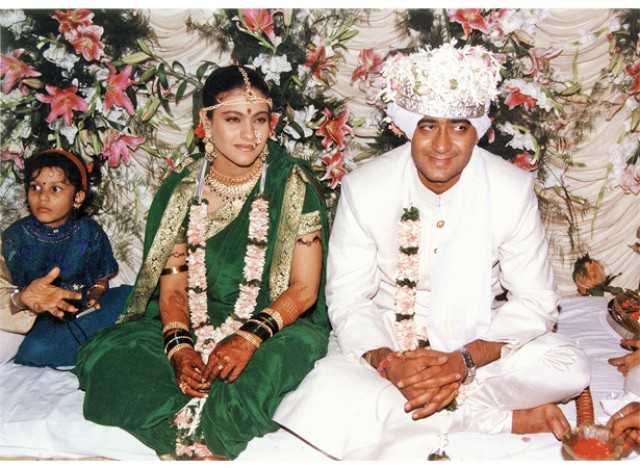
Ajay Devgn’s and Kajol’s unlikely romance
B-town’s prime example of a happily married couple, Ajay Devgn and Kajol, were once dubbed an ‘unlikely pair’. But despite their contrasting personalities, the two actors got married in a traditional Maharashtrian ceremony at the Devgn house. All this because reportedly a newspaper had revealed where Ajay and Kajol would wed, so on the eleventh hour the Devgns changed their plans and shifted the proceedings from a Gurudwara to their residence.

Madhuri Dixit ties the knot
Family girl, Madhuri Dixit, made annual trips to visit her sisters in the United States every year. After she took a sabbatical from work after Dil Toh Pagal Hai in 1998, she flew to the US on one of her regular sojourns… but met her ‘dream man’ instead. The diva gave up films to tie the knot with reputed NRI doctor Sriram Nene. Her fans were delightfully surprised that Madhuri had settled down.
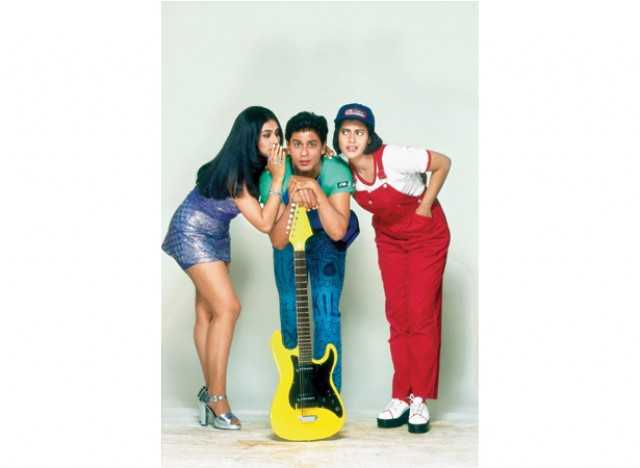
Kuch Kuch Hota Hai ushers in a new style
Karan Johar’s directorial debut was more glamorous than the Milan fashion week. Shah Rukh Khan and Kajol sported colourful and vivid clothes from brands like DKNY and Polo. An attractive Rani Mukerji lent Indian elegance with her flowing sarees. Kuch Kuch Hota Hai was like the graffiti version of Romeo & Juliet. It won millions of hearts in India and a billion hearts worldwide. Karan Johar opened the floodgates for NRI audiences paving a way for Indian filmmakers to take their movies to an international audience. KKHH was also criticised for being too fluffy in its romance and comedy, but those were just minor glitches in a film that inspired the MTV generation.
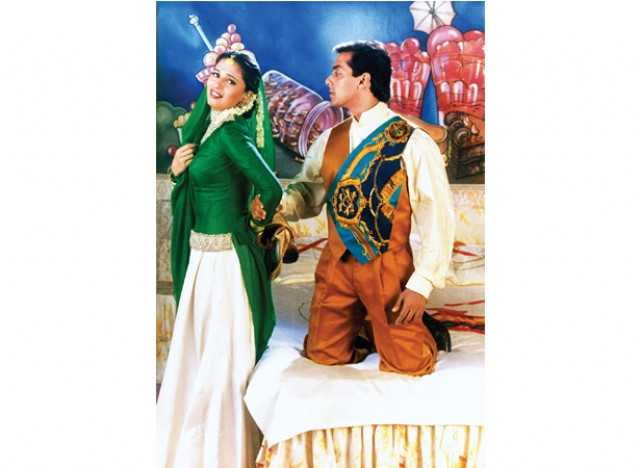
Super success of Hum Aapke Hain Koun...!
For a country obsessed with marriage, functions and opulence, Sooraj Barjatya’s Hum Aapke Hain Koun..! was a celebration extravaganza. With 14 songs, three-plus hours runtime, a full-blown Indian wedding subplot and its leads Madhuri Dixit and Salman Khan on top of their game, this was a crowd pleaser. The movie went on to earn more money than any other film had done till then. It also became the most rented movie on VHS in India. And the Bible of Indian weddings in consequent years.

Kajol-SRK magic
You could consider the ’90s as the golden era of the Shah Rukh Khan – Kajol pairing. Together they featured in five films and every single one turned out to be a winner. While it started off with the off-beat thriller Baazigar, the no-holds-barred entertainment in Karan Arjun took their reputation to the next level. With Dilwale Dulhania Le Jayenge, this pair became one of the most iconic pairings of Indian cinema. And then films like Duplicate and Kuch Kuch Hota Hai merely reaffirmed everyone’s faith in this onscreen couple. The very essence of the term jodi, came from their success story.

Ashiwarya’s slow start
The most beautiful woman in the world, winner of the Miss World pageant in 1995, Aishwarya Rai should’ve had an easy entry into films. But her debut film Aur Pyar Ho Gaya flopped. Subsequent releases like Aa Ab Laut Chalein and Jeans didn’t perform well either. It was at this juncture in 1998 that Aishwarya hit the lowest point in her career. But almost instantly she signed a spate of promising films with big filmmakers. There was Taal with Subhash Ghai and Hum Dil De Chuke Sanam with Sanjay Leela Bhansali. Both movies changed her fortunes and Ash never looked back.

Ram Gopal Varma bursts onto the scene
Ram Gopal Varma can make a hundred embarrassing movies (like Agyaat, Department, Bhoot Returns etc) and he’d still be forgiven. After all, he made Satya (1995). But before his much acclaimed gangster drama, RGV had already made a name for himself with Shiva in 1991 and Raat in 1992. Rangeela with Aamir Khan and Urmila Matondkar in 1995 had cemented his place in cinema history. He followed it up with average fares like Daud and Mast, but the edgy thriller Kaun got him back. Later, the focus shifted from his films to his muses – Urmila, Antara Mali and Nisha Kothari.

SHOW COMMENTS